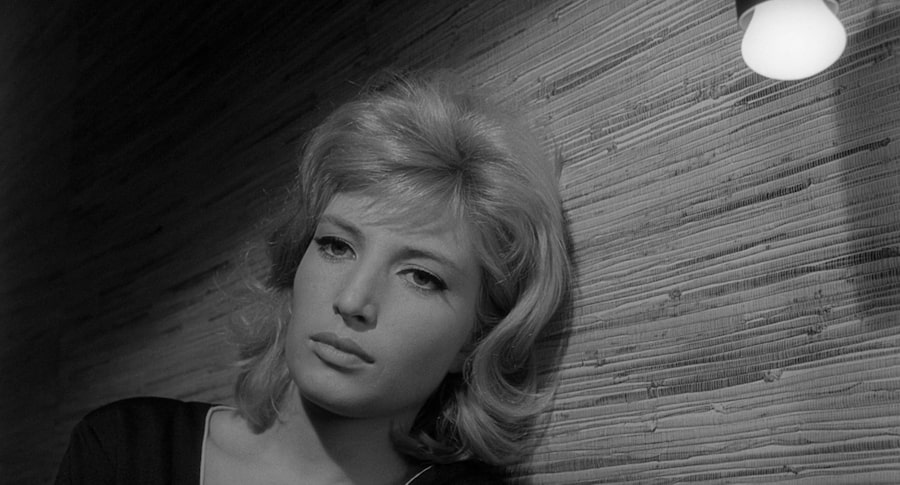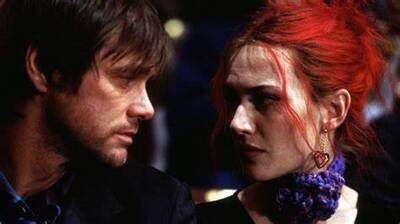Tributes
Monica Vitti: 1931-2022
Monica Vitti: 1931-2022

When Michelangelo Antonioni’s “L’Avventura” opened at the Cannes Film Festival in May of 1960, the audience laughed at it throughout. They booed and jeered the long sequences in which Monica Vitti’s Claudia wanders through her life and tries to find some meaning in it after the disappearance of her friend Anna (Lea Massari) earlier in the film, which is never explained or resolved. The response was so bad that Antonioni and Vitti fled the theater, and Vitti was in tears.
But Roberto Rossellini and many other filmmakers signed a statement praising the movie, and it was critically acclaimed. Andrew Sarris and Pauline Kael, who were usually at odds, were both in favor of “L’Avventura.” Sarris and Kael immediately turned against the movies that Antonioni and Vitti subsequently made together, “La Notte” (1961) and “L’Eclisse” (1962), but these were landmark pictures of their time, shot through with anxiety about post-war living and the threat of the atomic bomb, stripped down to the essentials of what we can perceive of the known world just by looking at its surface. Vitti was the figurehead of these Antonioni movies of the 1960s, and she was also Antonioni’s lover when they were making them.

Vitti’s Claudia in “L’Avventura” is a cool blonde, beautifully dressed, elegant, serene, even, until Anna goes missing. There is a long sequence where the group that has taken a boat trip together search for Anna, and Antonioni shows us stark images of the sea; this sequence builds and builds until Vitti finally cries “Anna!” so that it has the force of a question that goes well beyond plot or what we can know about what happened to her. Antonioni trusts Vitti with all the long, life-like sequences that follow this loss in which Claudia feels her own aimlessness and lack of center, and as she drifts into a relationship with Anna’s boyfriend Sandro (Gabriele Ferzetti), Vitti catches the horror of how Claudia understands that all people are essentially replaceable and essentially alike. But there is one scene here where Claudia stares in a mirror and begins to make goofy faces, and this comes as a relief amidst so much highly believable anguish and uncertainty. This moment seems to come from Vitti herself, as if she feels the need to inject just a bit of her own humor into the very humorless enterprise of her lover’s masterpiece.
Vitti was born Maria Luisa Ceciarelli in Rome, and she was unhappy that her parents didn’t allow her the freedom that she would have liked. She began to act in amateur productions as a way of asserting herself, and Vitti appeared on Italian television. She first worked with Antonioni when she dubbed the voice of an actress for his movie “Il Grido” (1957). After they established their reputation with “L’Avventura,” Vitti wore a black wig for “La Notte,” in which she is exquisite but somewhat secondary to Jeanne Moreau.

It was in their third film “L’Eclisse” that Antonioni made the largest demands on Vitti, and she responded with a performance that isn’t really a performance but a helpless and vulnerable appearance in front of a camera. Antonioni did not favor traditional acting. He required an actor to offer up themselves to his camera without working up anything for it. What he needs from Vitti in “L’Eclisse” is pure unease, a quality she exudes in the first sequence in which her Vittoria feels trapped in an apartment with her lover of the moment and finally feels the need to escape.
For so much of “L’Eclisse,” Vitti is a kind of human tuning fork or weather vane, stripped down to some essence that had never been shown on screen before. Antonioni asks that we really look at the things he shows us, particularly buildings and streets and street life, so that they might tell us something about the mysterious life we are leading. Vitti is his designated watcher. If you yield to the rhythm of “L’Eclisse,” every shot of her carries an accumulating suspense. We see something. We see how Vitti reacts to it. When she manages to find a kind of calm or joy in what she sees, we ourselves can experience that joy. Plot and character and everything else we are trained to respond to in movies fall away, and they are not missed. In fact, if you give in to the rhythms and the questionings in the Antonioni-Vitti films, they make more conventional movies seem false and very rejectable.
Throughout Antonioni’s films, there is a feeling that Africa is a country in which true calm might be found, and this idea reaches its conclusion in his masterpiece “The Passenger” (1975). There is a scene in “L’Eclisse” in which Vittoria puts on blackface and does a dance around her room, and it stems from this longing for Africa. Critics have tried to explain it or place it in some kind of context, but it mars the film, mainly because Vitti’s behavior conforms to a cutesy stereotype of a tribal woman. This is very unfortunate, because aside from this scene “L’Eclisse” is one of Antonioni’s most profound films; it is very much a triumph for Vitti, particularly in the last famous moment where she reaches some kind of understanding in close-up and then the film proceeds without her. Like Anna in “L’Avventura,” Vittoria disappears from her own movie. To Africa? To space? It doesn’t matter, because Antonioni’s final motto seems to be “Anywhere but here.”

Vitti played a woman on the brink of a total breakdown in Antonioni’s “Red Desert” (1964), which is in color, and then she became an international star for a bit, cavorting as a sexy spy in Joseph Losey’s “Modesty Blaise” (1966) before returning to Italy to appear in a series of popular comedies in which she was very lively and high-spirited. She was in a segment of Luis Buñuel’s “The Phantom of Liberty” (1974), and in 1980 she made her final film with Antonioni, “The Mystery of Oberwald,” an adaptation of a Jean Cocteau play that served as a vehicle for her and another chance for Antonioni to experiment with color.
In 1989 Vitti directed and starred in a movie opposite Elliott Gould called “Secret Scandal,” but she began suffering from Alzheimer’s disease and was cared for by her husband Roberto Russo for the last 20 years of her life. Antonioni himself had suffered a stroke that robbed him of his speech before his death in 2007, so both Vitti and Antonioni were subjected to the worst sorts of physical and mental punishment as older people. The thought of Vitti spending such a long period of time without memory or identity is something that even Antonioni’s deep-seated pessimism could not have anticipated. Like Antonioni, Vitti is done looking and wondering, but the looking and wondering she did in “L’Avventura” and “L’Eclisse” is a height of cinematic beauty and profundity. Her responsive face will always stare out of those pictures, yearning for something else, yearning for something lost, yearning for something better.
Dan Callahan
Dan Callahan is the author of "Barbara Stanwyck: The Miracle Woman" and "Vanessa: The Life of Vanessa Redgrave." He has written for "New York Magazine," "Film Comment," "Sight and Sound," "Time Out New York," "The L Magazine," and many other publications. Read his answers to our Movie Love Questionnaire here.
Latest blog posts
Latest reviews

Hard Miles
Nell Minow

The Ministry of Ungentlemanly Warfare
Glenn Kenny

Under the Bridge
Cristina Escobar

Irena's Vow
Christy Lemire

Sweet Dreams
Matt Zoller Seitz

Challengers
Matt Zoller Seitz
Advertisement




